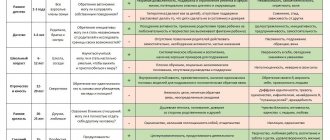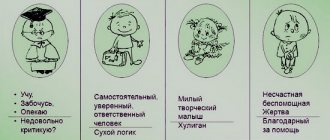Biography
Erickson's fate is peculiar. He was born as the result of an extramarital affair between his mother, Carla Abrahamsen, of Jewish descent, and a Danish citizen (there is no further information about Erikson's father beyond his last name). Carla Abrahamsen came from a prominent Jewish family originating from the northern German lands. Her father, Joseph, was a dried fruit merchant in Copenhagen, and her brothers Einar, Nikolai, Max and Axel were involved in charity work (including a kitchen for poor immigrants from Russia, mostly Jews). Her mother, Henrietta, died when Carla was 15 years old.
Since Carla was officially married to Valdemar Isidor Salomonsen (a stockbroker of Jewish origin), the child was recorded as Erik Salomonsen. After some time, she trained as a nurse, moved to Karlsruhe and in 1904 married pediatrician Theodor Homburger. In 1909, Erik Salomonsen became Erik Homburger, and in 1911 he was officially adopted by his stepfather. Although her husband adhered to Conservative (not Orthodox) Judaism, Carla insisted on strict adherence to Jewish ritual in the family, including kosher meals, holidays, and weekly attendance at synagogue on Fridays and Saturdays. In addition to secular education, children received Jewish education. Moreover, Karla headed the branch of the League of Jewish Charity of Baden at the local synagogue.
The issue of identity crisis has much to do with Erikson's own life experiences. Information about his biological father was hidden from him in childhood. At the Jewish religious school he was teased for his “Nordic” appearance (he was tall, blue-eyed, blond), and at the regular school for his Jewish religion. Over the years, he became increasingly tormented by the suspicion that his father was not of Jewish origin.
In 1930, Eric Homburger married Canadian dancer and artist Joan Mowat Serson and emigrated from Vienna to the United States in 1933. Somewhat later, his sisters emigrated: Ruth Hirsch settled in New York and Ellen Katz in Haifa. In the late 1930s, Erik Homburger officially changed his last name to Erikson (by adopting himself, as he explained it), while keeping his former last name as his middle name.
Erikson contrasted Freud's theory, which divided psychological development into five stages, with his own scheme, in which there were eight such stages. Erikson renamed the so-called “genital stage” “adolescence” and also added three more adult stages.
Erikson also owns the concept of “ego psychology,” emphasizing the role of the Ego as something more than the “handmaiden of the Id” (in Freudian ideas). According to Erikson, it is the Ego that is responsible for organizing life, for ensuring harmony with the physical and social environment, for healthy personal growth; it is a source of self-confidence and personal identity.
In 1950, he became a victim of the “witch hunt” (McCarthyism) in the United States, as he was suspected of communist sympathies. When Berkeley professors were required to sign a loyalty oath, Erickson left the university, after which he worked for ten years at a clinic in Massachusetts and another ten years at Harvard.
In 1970, Erickson was awarded the Pulitzer Prize for non-fiction for his book Gandhi's Truth.
Erikson's stages of personality development
Erikson divided personality development into eight stages, during which the process of ego identity formation unfolds.
- The first stage - infancy - lasts from birth to 1 year. The basic crisis is the formation of trust or distrust in the outside world. The source of energy here is hope. Alienation provokes temporary confusion.
- Early childhood stage – from 1 year to 3 years. The basic crisis is the opposition of personal autonomy to doubt and shame. The source of energy is will, and alienation occurs due to distorted self-awareness.
- Stage 3 to 6 years, or play age. The crisis consists of a conflict between initiative and a sense of guilt. The source of energy at this stage is the ability to formulate goals and objectives. Alienation occurs due to the rigid predetermination of the social role.
- From 6 to 12 years old, the child is at the school age stage, when failure is opposed to competence. A potential source of energy for the psyche here is confidence, and alienation is provoked by stagnation of activity.
- Next comes the stage of adolescence, which Erikson ranged from 12 years to 21 years. It is here that the confrontation between identity and role confusion occurs. The crisis is expressed by the question: who am I? The teenager strives for independence and wants to be free from responsibility for his life. Adolescence is the age during which the future professional development of the individual is determined, and attempts are made for the first time to build a romantic relationship.
- The stage of early maturity lasts from 21 to 25 years. Here, intimate relationships are contrasted with isolation. The question at this age is: am I able to build trusting relationships with others?
- The stage of middle maturity lasts from 25 to 60 years. It contrasts stagnation in action with productive life. The question that expresses the basic conflict of this age is what does my life mean? What am I going to do with it?
- The eighth stage is called the late maturity stage. It involves a process that Erikson’s theory of personality development calls ego integration. The question of this period was: did my life have meaning?
Infancy
From birth to one year is the first stage in which the foundations of a healthy personality are laid in the form of a general sense of trust.
The main condition for developing a sense of trust in people is the mother’s ability to organize the life of her small child in such a way that he has a sense of consistency, continuity and recognition of experiences.
An infant with an established sense of basic trust perceives his environment as reliable and predictable. He can bear the absence of his mother without undue distress and anxiety about being “separation” from her. The main ritual is mutual recognition, which persists throughout subsequent life and permeates all relationships with other people.
The methods of teaching trust or suspicion in different cultures do not coincide, but the principle itself is universal: a person trusts the world around him, based on the degree of trust in his mother. A feeling of mistrust, fear and suspicion appears if the mother is unreliable, incompetent, or rejects the child.
Mistrust can intensify if the child ceases to be the center of her life for the mother, when she returns to previously abandoned activities (resumes an interrupted career or gives birth to another child).
Hope, as optimism regarding one’s cultural space, is the first positive quality of the ego acquired as a result of the successful resolution of the trust/distrust conflict.
What is ego integration?
The feeling of ego integration represents a sense of the integrity of one's self. Children under 3 years of age do not have their own “I”; they identify themselves with the world around them.
When a person feels comfortable in the world, when the world becomes a place to satisfy all human needs, this is integration. That is, integration is the highest degree of fitness.
According to E. Erikson’s epigenetic theory of personality development, ego integration manifests itself in old age, provided that a person has learned from his own experience moments of joy and the bitterness of defeat, and has inspired others. Such a person is not afraid of death, because she managed to leave a mark behind herself (in creative achievements or her descendants), thereby gaining immortality.
Ego identity
Ego Identity
Erikson emphasized the development of ego identity. Ego identity is the conscious sense of self that a person develops through social interaction, and it becomes the “center” of the psychosocial developmental stage of personality identification and role confusion
According to Erikson, a person's ego identity is constantly changing due to new experiences and information that people gain through daily interactions with others. Personal identity provides an integrated and coherent sense of self that persists throughout a person's life. A sense of personal identity is formed through life experiences and interactions with others, and this identity helps a person guide actions, beliefs, and behavior as they age.
Epigenesis
Epigenesis is the theory that each person develops through a sequence of stages that occur in a natural, predetermined order. The stages are sequential, but they are not hierarchical. At each stage, a person is faced with a crisis or problem that is especially important at that time in life and must be resolved
A person's social environment has an extremely important influence on how each crisis is resolved, but it also does not determine the order in which the stages appear.
Erikson's stages, postulated in the epigenetic theory of social development, are associated with a crisis that must be satisfactorily resolved in order for an individual to develop qualities such as trust, autonomy and initiative, etc. While unhealthy or unsatisfactory resolutions lead to mistrust , shame and doubt, guilt, etc., which can make a person psychologically troubled.
Erik Erikson's theory of personality development among other approaches
Erik Erikson
Erikson's theory does not directly seek to achieve learning, developmental, and pedagogical goals; the concept describes the current situation as the norm and highlights undesirable paths of development. This theory can be considered as a guide for psychotherapeutic activities, and not at all for professionals in personality formation.
Stage 2: Autonomy vs. Shame/Doubt (18 months - 3 years)
In the second stage, children gain a certain degree of control over their bodies, which in turn increases their independence. By successfully solving problems on their own, they gain a sense of independence. Thus, by allowing children to make decisions and gain control, parents can help children develop a sense of autonomy.
Important!
Children who successfully pass this stage usually have healthy self-esteem. Erikson believed that an imbalance between autonomy, shame, and doubt would lead to the belief that children can act intentionally and within reasonable limits.
Childhood and early years
Erik Erikson was born in Frankfurt, Germany, into the family of Carla Abrahamsen and Jewish stockbroker Waldemar Isidor Salomonsen. At the time the boy was born, his parents had not seen each other for several months. He was recorded as Erik Salomonsen, but there is no real information about his biological father. Soon after the birth of her son, his mother moved to Karlsruhe, where she got a job as a nurse and married a second time, to pediatrician Theodor Homburger.
In 1911, Homburger officially adopted the boy, and he became Eric Homburger. The story of his birth is carefully hidden from him, and the boy grows up not knowing who his real father is.
Scientific activity
Erikson teaches at a private school in Vienna, where he meets Anna Freud, the daughter of Sigmund Freud. It is she who kindles his interest in psychoanalysis, and Erikson goes to comprehend this science at the Vienna Institute of Psychoanalysis.
In 1933, while he was studying at the institute, the Nazi Party came to power in Germany, and Erikson had to flee the country. First, he goes to Denmark, and then moves to the USA, where he becomes the first child psychoanalyst in Boston.
After working there for some time, Erickson changed positions in various institutions, including the Massachusetts General Hospital, the Judge Baker Center for Family Education, Harvard Medical School and the Psychological Clinic, etc.
In 1936, Erickson taught at Harvard Medical School and also worked at the Institute of Interpersonal Relations at this university. He also finds time to teach a group of children on the Sioux Reservation in South Dakota.
In 1937 Erickson leaves Harvard and joins the staff of the University of California. He works closely with the Institute for Social Protection of Children and is engaged in private practice. Erickson devotes part of his time to teaching children of the Yurok tribe.
In 1950, his personal experiences with people of different races living in different social conditions led to the writing of the most famous book of his entire scientific career, Childhood and Society. In this book, the author presents to the world his own theory of “personal crisis.”
After leaving the University of California, Erickson began working and teaching at the Austen Riggs Center, the premier psychiatric treatment facility in Stockbridge, Massachusetts. There, due to the nature of his activity, he encounters mentally unbalanced teenagers.
In 1960, Erikson returned to Harvard University, where he would work until retirement, after which, together with his wife, he would begin writing papers on various topics in psychology.
Proceedings
Major works
- Childhood and Society
(
1950 ) - Young Luther.
Historical-psychoanalytic study (
Young Man Luther. A Study in Psychoanalysis and History
) (1958) - Gandhi
's Truth: On the Origin of Militant Nonviolence
( 1969) - Adulthood
(
editor
, 1978) - Vital Involvement in
Old Age
( with the participation of JM Erikson and H. Kivnick, 1986)
The Life
Cycle Completed
( featuring JM Erikson, 1987)
Collections (in English)
- Identity and the Life Cycle. Selected Papers
(1959) - A Way of Looking at Things: Selected Papers 1930–1980
(Editor: SP Schlien, 1995) - The Erik Erikson Reader
(Editor: Robert Coles, 2001)
Bibliography in Russian
- Erickson E.
Identity: youth and crisis / Transl. from English; total ed. and preface A.V. Tolstykh. - M.: Progress, b.g. (1996). - Erickson E. G.
Childhood and society / Transl. and scientific ed. A. A. Alekseev. - St. Petersburg: Summer Garden, 2000. - Erickson, E. G. Young Luther. Psychoanalytic Historical Research / Erik G. Erikson; Per. from English A. M. Karimsky. - M.: Moscow Philosophical Foundation "Medium", 1996. - 560 p.
Contribution to science
Erikson's basic personality theory explains existing normal, adequate states, and also explains pathological, unhealthy variations in possible situations. The doctrine of this researcher is a textbook for psychologists, psychotherapists and anyone interested in psychological issues.
Identity is the central definition, according to Erikson. Personal identity is a set of traits or character traits that help a person become different from other members of society; these qualities are the “highlight” of a person.
Ego identity is a present but deceptive sense of the individual's integrity and independence, a sense of constancy and immutability of the inner Self.
We recommend: Personality Psychology
Group identity is a sense of belonging to a social group. Ego identity and group identity are formed and developed throughout a person's life.
Erikson identified the main age periodization of personality development and formation:
1. Infancy (basic trust or lack thereof): lasts from birth until the baby is one year old. At a very early stage of development, the foundations of trust and a sense of security are laid through maternal care. If the mother rejects the child and takes poor care of him, then fear and mistrust are formed in the baby.
2. Very early childhood (independence or feelings of shame and doubt): lasts from one to three years. The foundation for the baby’s independence is formed, his horizons expand, and the child gradually learns to control himself. If there is too much guardianship or, conversely, unjustified expectations of relatives, uncertainty, a feeling of shame or doubt arises in the child.
3. Playing period (initiative or guilt): lasts from three to six years. During this age period, the child actively explores the world and acquires new skills. Society expects him to be active, he has responsibilities towards himself, and sometimes towards younger children or pets. Parents who encourage their child's curiosity help them become independent. And those who limit create passivity and guilt in him.
4. School age (industriousness or inferiority): lasts from six to twelve years. During this period, children learn discipline, consistency, get involved in work, and expand their knowledge and experience. If you do not support your child, he may develop feelings of inferiority and insecurity in front of his friends.
We recommend: Read more about age-related crises
5. Adolescence/gradual maturation (ego identity or shifting social roles): the main stage, according to Erikson. This is the period of formation of the basic positive ego identity. The future of a person takes on clearer outlines and becomes realistically feasible. Adolescents learn new social roles, but if their mastery is unsuccessful, role displacement occurs.
6. Youth/Maturity (Intimacy or Isolation): Lasts from about age twenty to age twenty-six. Intimacy refers to the feeling of closeness that we show towards our family and dear people. If attempts to make contact or establish relationships fail, loneliness and isolation arise.
7. Maturity (performance/activity or inertia): lasts up to 64 years. During this age period, people take care of the younger generation and try to be useful. When there is a feeling of uselessness or absence of an object of care, inertia and passivity are formed.
8. Old age (ego-integrity or despair): from 65 years. A number of new problems arise: illness, lack of strength, constant fatigue, pain. We have to get used to the new mental state. Reflections on approaching death. An analysis of past stages of life takes place. In old age comes true wisdom and understanding of what is happening.
We recommend: Francis Galton (biography)
At almost every stage of life, an individual faces various crises, which, according to Erikson, must be successfully overcome.
Erik Erikson and his books made a huge contribution to the development of psychology. In them, people can find answers to many life questions in brief or complete formulation.
Maturity
The seventh stage occurs in the middle years of life from 26 to 64 years. Its main problem is the choice between productivity (generativity) and inertia (stagnation). An important point of this stage is creative self-realization.
“Mature adulthood” brings a more consistent, less unstable sense of self.
The Self manifests itself by giving more in human relationships at home, at work and in society. There is already a profession, the children have become teenagers. The sense of responsibility for oneself, others and the world becomes deeper.
In general, this stage involves a productive work life and a nurturing parenting style. The ability to be interested in universal human values, the destinies of other people, to think about future generations and the future structure of the world and society develops.
Productivity acts as the concern of the older generation about those who will replace them, about how to help them gain a foothold in life and choose the right direction.
If in adults the ability for productive activity is so pronounced that it prevails over inertia, then the positive quality of this stage is manifested - care.
Difficulties in “productivity” may include an obsessive desire for pseudo-intimacy, over-identification with a child, a desire to protest as a way to solve stagnation, reluctance to let go of one’s own children, impoverished personal life, self-absorption.
Those adults who fail to become productive gradually move into a state of self-absorption, when the main subject of concern is their own personal needs and comforts. These people do not care about anyone or anything, they only indulge their desires. With the loss of productivity, the functioning of the individual as an active member of society ceases, life turns into satisfying one’s own needs, and interpersonal relationships become impoverished.
This phenomenon, like a midlife crisis, is expressed in a feeling of hopelessness and meaninglessness of life.
Questions answered: What does my life mean to this day? What am I going to do with the rest of my life?
Direction in psychology
Erik Erikson's seminal work is Childhood and Society (1950). This book draws heavily on the practice of psychoanalysis. Since psychoanalysis has always been aimed at studying mental disorders, the book describes various conflict situations as examples. This work is about childhood and historical processes.
Erikson's theory largely deals with the development of the ego (self). However, the scientist stated that his theories are a continuation of the psychosexual ideas of S. Freud, and they will help in further psychosocial development and in conducting research in the field of biology and sociology.
The psychologist introduced the concept of “ego psychology,” which revealed the role of the Ego in a person’s life. The scientist believed that only the Ego is responsible for the quality of life, for physical and spiritual harmony, for the healthy socialization of a person.
As Erikson stated, the ego determines a person's identity and self-esteem. The inner human “I” is the source of all victories and defeats, joy and sorrow.
It was extremely important for the psychologist to study the Ego and its adaptive abilities when various emotions arise: apathy, fear, aggression. Due to the development of various disorders and crises of a psychological nature in humans, the scientist searched for and selected psychological methods that could effectively help the patient
For example, consultations with a psychologist, therapy, medications, hypnosis
Due to the development of various disorders and crises of a psychological nature in a person, the scientist searched for and selected psychological methods that could effectively help the patient. For example, consultations with a psychologist, therapy, medications, hypnosis.
We recommend: Identification is
Erikson described the main 8 age stages of personality formation, and this became a significant contribution to the study of the human psyche. This teaching is familiar to any professional psychologist.
The scientist tried to demonstrate the influence of culture that it has on the stages of the formation of an individual, and this served as a fulcrum for many researchers studying personality behavior patterns, creating original methods for studying psychological questions that people ask today.
The scientist invented his own concept of psychological development of the individual and divided it into eight stages, somewhat similar to Freud’s diagram of the development of the individual. Erickson only added three new stages of formation.
Erikson wrote that all manifestations must be recognized within the framework of the interrelationship of biology, behavior, perception and society.
The theoretical orientation of Erikson's teachings includes:
- Analysis of the changes that accompany a person throughout his life, starting from childhood.
- Emphasis on the healthy mental state of people, rather than on the pathological one.
- The study of the Ego, which determines a person’s self-identity and individuality.
- Relating clinical findings to cultural and historical phenomena.
- Interpretation of the stages of development and formation of the human psyche.
- Creating methods to help other scientists and psychologists.
Let's summarize
Erikson's age periodization is a classification of personality development proposed by a psychologist. In accordance with the theory, a person, having been born with a certain potential inherent in him by nature, goes through 8 stages of growing up, at each of which he solves a separate problem, which becomes the basis for the development of his natural abilities and its implementation in society.
At each stage, the personality develops, acquiring strong or weak qualities - depending on whether he solves the main task of development or not. Poor development of personal qualities is not fatal. This means that it is difficult to solve problems at the next stages. With proper persistence, all the problems of the previous stages can be solved at the maturity stage.
Erikson's Theory of Personality Development and Ego Identity
What does the term mean that Erickson was so interested in that he devoted much of his research to it? Strictly speaking, identity is the identity of a person with himself. Erikson sought to expand this concept. Identity, he believed, is both an image of oneself in relation to the world around us, and a person’s ability to qualitatively solve the difficulties that arise before him, and an indicator of the maturity of the individual.
Transitions between stages of personality development are crises. But they are not neurotic in nature, but are only turning points in development. Erikson's special attitude towards adolescence can be seen in many of his works. At this stage, the scientist believed, the deepest psychological crisis occurs. Three powerful forces lead to it: physiological maturation, problems communicating with peers, and professional choice.
Erickson gave a special name to the period between adolescence and adulthood - mental moratorium. The course of this crisis largely depends on the previous stages. The result of adolescence is either a mature personality or a personality with a “diffuse identity.” If the crisis of adolescence has not been overcome, then the result is pathological development of the individual. It is expressed in the following characteristics:
- Increased, persistent feeling of anxiety;
- Feeling of loneliness and emptiness;
- Reluctance to take responsibility; the desire to delay the acquisition of adult status for as long as possible;
- Social fears, as well as the inability to interact emotionally with people of the opposite sex;
- Denial of the value of all social roles, including male and female.
The period of adulthood is also of particular importance for ego identity. If a person does what he loves and has managed to build a family, this is a good sign. If he is lonely, he does not have a good job or a satisfying hobby, stagnation begins. The individual experiences emotional and physiological stress.
Conclusion
No matter how much Erikson's theory of personality development is opposed to Freud's psychoanalysis, they also have something in common. In both theories, the stages of human development are predetermined. The order in which they are completed also remains unchanged. Erikson was convinced that conflicts in previous stages could also occur in subsequent stages. The eight tasks that Erikson identified in his theory are solved throughout life. If a person was unable to cope with any crisis in a timely manner, he has a chance to do it later - but with great effort. After all, every period of life “throws up” new difficulties. According to Erikson, a crisis is not a disaster, but just a turning point. It can both maladapt a personality and be a source of strength.
Topic: Personal growth
Freud and Erikson: theoretical differences
Erikson himself insisted that his concepts were nothing more than a continuation of Freud's psychoanalytic theory. But in fact, he moved so far away from it that in modern science Erikson’s theory is considered separately. What is the difference between the views of Freud and Erikson on personality development, human character and its formation in the process of life?
- Freud gave the main role in personality development to unconscious drives, or Id. He was convinced that it was the conflict between the unconscious and social restrictions that was the cause of all diseases and neuroses. Erikson insisted on the dominant role of the ego, due to which Erikson’s theory was called “Ego psychology.” Freud believed that the Ego is a component that, as if between a rock and a hard place, is trying to reduce the restrictions of society and the drives of the Id. Erickson believed that the ego is a separately functioning system that works with the outside world through perception, thinking, memory and attention.
- Freud's and Erikson's views on the parental role in character formation differ. The development of personality is influenced to a greater extent by the conditions in which a person was born and lives, and the historical era. Erikson came to this conclusion by observing the development of children in different cultures. The scientist was sure that the Ego inevitably develops and changes under the influence of external conditions.
Erikson's theory of personality development differs from Freud's concept in understanding psychosexual conflicts
Freud focused on the influence the unconscious has on human life. He also believed that unresolved childhood traumas were the cause of adult conflicts.
Erikson, on the contrary, placed the main emphasis on understanding the adult as an individual who can cope with difficulties. His theory is centered on the concept of the Ego with all its virtues, which are revealed in the process of life.










